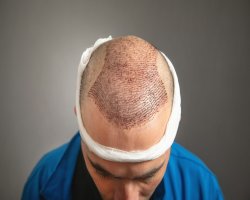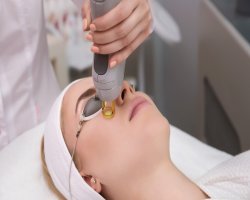Types of Baby Thermometers You Should Readily Have at Home

The moment a new family member arrives, everything changes, especially for the new parents. Everyone may find the process of adapting to this new type of lifestyle to be highly stressful, particularly for new mothers, as well as their babies. Additionally, a number of changes in your child's growth will take place throughout time, including adjustments to the infant's body temperature. When the temperature of the baby is outside of this range, it can be difficult to determine whether they are suffering from a cold, the flu, or simply teething symptoms. The typical body temperature of newborns is actually between 36.5 and 37.5 degrees Celsius. In order to take your baby's temperature and establish whether your child needs a dose of medication, to see the pediatrician, or just to be cautious, it is important to keep baby thermometers close at hand.
You will need the most reliable thermometer out there if you want to measure temperature accurately. There are actually many different types of baby thermometers available for selection when it comes to determining temperature. And when buying, knowing your alternatives is a fantastic idea because you certainly want to purchase the item that is best for your baby.
Since all thermometers are considered medical devices, they must adhere to certain federal regulations. Therefore, despite a brand's potential for higher or lower consumer trust, no thermometer brand should genuinely be "more accurate" than another. However, people frequently choose certain thermometers' qualities over those of others. Rectal thermometers, in particular, are recognized to be among the most accurate.
Apart from rectal thermometers, there are other types that might be as accurate as them. Keep on reading to learn more about them.
Rectal Thermometers
Today's digital thermometers make taking a baby's temperature easy and provide prompt results. The American Academy of Pediatrics, or AAP, advises taking the temperature rectally, by inserting a thermometer in the baby's anus, for the best results in infants and young children up to the age of three. The baby's internal temperature can be quickly and accurately determined using this procedure.
Although your child might find it uncomfortable, it is actually one of the most accurate baby thermometers on the market.
Oral Thermometers
For children 4-5 years old or older who can cooperate and maintain the thermometer securely in their mouths, an oral thermometer is the ideal form of thermometer. The only drawback is that if the child could not maintain the thermometer beneath their tongue for around a minute, parents could not receive an accurate reading. Oral thermometers are accurate and provide a good approximation of core body temperature, only when used properly.
If your child cooperates, you can typically take their oral temperature using a digital thermometer. However, children who frequently cough or who are forced to breathe through their mouths due to congested noses might not be able to keep their mouths closed for long enough to do an appropriate oral reading.
In using oral thermometers, it must first be cleaned with rubbing alcohol or soap and water. Dry them after rinsing. Then, turn the thermometer on and place it under the tongue in the back of your child's mouth. When you hear the beep that signifies that you have taken a reading, you can finally take it off. Additionally, remember that you ought to wait at least 15 minutes before taking your baby's temperature after feeding or drinking.
Axillary Thermometers
Axillary thermometers, often known as underarm thermometers, can be employed to determine whether your child is experiencing a fever. But then, the temperature should be checked again using a more precise method if it indicates a fever. Although less precise, it can still provide a general sense of temperature.
These thermometers are often most effective on toddlers who can cooperate and keep the thermometer firmly in place until the thermometer beeps, given that they are put against the skin in the armpit.
Actually, this method of taking a child's temperature is one of the most convenient ways. Some parents choose to take an axillary temperature instead of a rectal or oral temperature in a cooperative child, particularly for children who are unable to hold a thermometer in their mouth.
To use this thermometer, make sure the baby thermometer is dry and clean before using it. Even while this is not as crucial as when you put the device in your mouth or rectum, it is still beneficial for maintaining your device. After that, activate the thermometer and insert the reading end into your child's armpit. Make sure your child's skin, not their clothing, gets touched by the finish. Finally, keep it there until you hear a beep indicating that you have taken a reading.
Temporal Artery Thermometers
The temporal artery thermometer, also referred to as a forehead thermometer, is thought to be a more recent approach for taking a child's temperature. They are used to read the temperature of the largest vein on the forehead. It is less irritating to a newborn and causes less discomfort than a rectal thermometer. It gauges the blood's temperature as it passes through the forehead's temporal artery. Any child older than six months can have their temperature taken easily, quickly, and without any harm. However, the ease of this type of thermometer usually comes with a higher price.
This is a feature of easy-to-use baby thermometers. It operates by measuring heat emitted from the blood vessel that spans the temporal artery, or the forehead, using infrared sensors. All ages can use these options, which are popular due to their speed and simplicity. Most are no-contact or only require a fast swipe across the forehead, giving them a hygienic and simple solution to clean. However, it is crucial to keep in mind that air temperature and sunshine might have an impact on forehead thermometers, potentially leading to false temperature readings.
In using temporal artery thermometers, make sure to use a clean, dry thermometer sensor. After that, firmly position the probe in the middle of your child's forehead. As you move the thermometer toward one ear, press the scan button. Release the scan button, then take your child's temperature.
Tympanic Thermometers
Tympanic thermometers, also known as ear thermometers, measure the temperature inside the ear and are safe to use on infants six months of age and older. They are actually quick and generally more comfortable than the other options. They are also less invasive than their conventional equivalents and can provide reliable readings.
This kind of baby thermometer measures infrared heat waves that are reflected off the eardrum. As the ear canals of younger babies are too narrow, they can only be used on infants older than six months. Additionally, this kind of thermometer needs to be properly positioned in a child's ear canal to get an accurate reading. Ear thermometers are less accurate than other methods while being simpler to use than multi-use thermometers because they can be impacted by narrow ear canals, ear wax, and chilly air temperatures.
Make sure your thermometer is clean and that you apply a cover over the end, if necessary, before using tympanic baby thermometers. The cone-shaped end must then be inserted into the ear canal of your youngster by gently pulling back the ear. Put it in a position where it looks like you are aiming it towards your child's opposite-side eye. Once it is in position, switch on the thermometer, and then wait for the beep that signals a reading.
Key Takeaway
It is definitely important to keep baby thermometers at home, so you can easily and accurately check at times when your child feels sick. Keep in mind that rectal thermometers can be used on newborns, but you should not use a forehead or ear thermometer until the child is at least six months old, and you should not use a thermometer in the mouth or under the arm until the child is four years old. The thermometer that you and your family will feel most at ease using during what may occasionally be a worrying period is the one that is suited for you and your family. You can be confident that your kid will receive the care they require when they require it if you are prepared with a thermometer and a reliable pediatrician.










